Severe Aplastic Anemia: Stefania's Story
Image

Stefania Erazo
Quito, Ecuador
Severe Aplastic Anemia
Transplanted in 2021
Many thanks to the American Society for Transplantation and Cellular Therapy for helping us share Stefania’s story.
Can you share a little bit about what your life was like before the onset of your aplastic anemia? 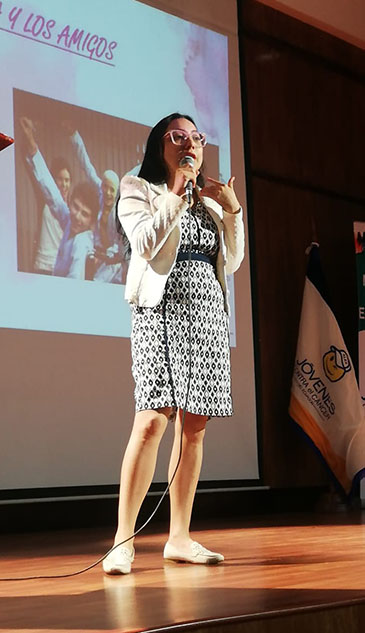
I was 27 years old, finishing my degree in psychology, and working in a high school with teenagers. I helped them talk about their emotions, drugs and alcohol, sexuality, etc. My role was to be a connection between the children and their parents and teachers, to help everyone understand better how to help teenagers. It was a rewarding time.
In the afternoons, I worked as a volunteer with Fundacíon Jovenes contra el Cáncer [roughly translated to Youths Fighting Cancer]. At the same time, I was working full-time toward my degree in psychology.
That sounds like an intense schedule.
Yes, and also, I was engaged, so I had a full social life, and I was living with my parents. My coworkers saw I was tired, but we thought I was just working too much.
What were your early symptoms?
In December 2017, my brother got married. The party began in the afternoon and went into the night, but I fell asleep really early. I missed most of the party, and it was like, “Why am I so tired?” 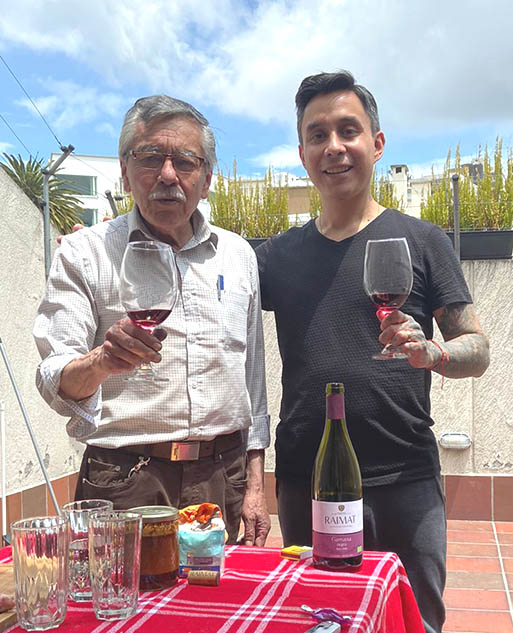

Then, in February, I had an infection, really bad, and they said maybe I was anemic, or it was a kidney infection. After that, I had a couple of months of back pain, but they told me it was anxiety from working too hard. I know now that it was bone marrow-related back pain, but then, I didn’t.
Finally, I went to a laboratory and asked for a blood test. I got the test on a weekend. Monday, they called me many times. I was busy at work and didn’t answer, so they called my parents because the test result was very bad.
My mother is a nurse. My father took the test results to a doctor at the clinic where my mother worked. The doctor said, “You have to find her now and bring her here. It’s an emergency.”
That day, I met my hematologist, Andres Orquera. We talked for two hours, and at the end, he told me I needed to have a bone marrow biopsy immediately. The biopsy results showed “bone marrow failure.”
Where did you seek treatment?
In Ecuador, if you work, you can receive free treatment in public hospitals with national health insurance. The clinic where my mother worked and where I first met my hematologist was private, so it was too expensive. My hematologist also worked in one of the national healthcare hospitals, and he was able to get me admitted. Fifteen days later, I was diagnosed with severe aplastic anemia.
I was given antithymocyte globulin (ATG) in hopes it would restart my bone marrow. After the treatment with ATG failed twice, my hematologist asked my brother and sister to be tested as potential bone marrow donors. Those results took four months to come back: my brother was a 9 of 10 match. But in Ecuador, they don’t do bone marrow transplants unless they have a donor who is a 10 out of 10 match. So, to use my brother as my donor, I would have to go out of the country.
Hearing that you would have to leave your home, your country, to get the care you needed to survive – what was your reaction?
First, I had to fight with the bureaucracy of the state of Ecuador. I had to wait one and a half years before I could leave., When they finally said yes, I felt for the first time that I was not going to die.
In July 2021, they chose to send me to Navarra, Spain, for my care. (Ecuador and Spain have a reciprocal care agreement.) When I arrived, I was in really bad condition.
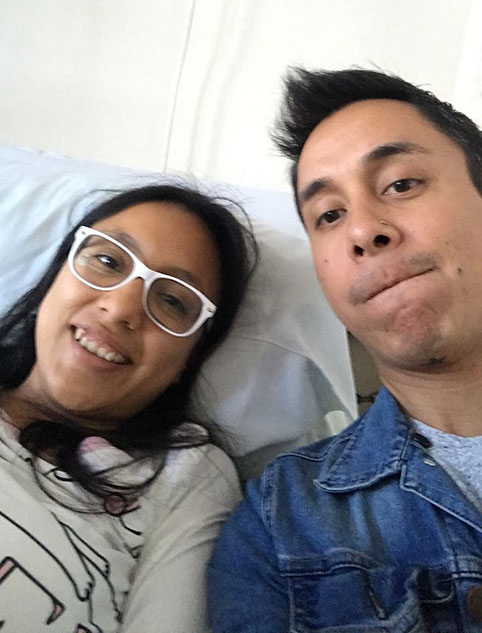 It took one month to prepare for the transplant. My brother came and donated his bone marrow. He is a fashion designer, a lover of sports, and a businessman who left all that to go to Spain and be my donor. We had a special bond before, and now it’s even stronger! I feel connected with him. I feel some of his characteristics in my personality. I try hard to let him know how grateful I am to him every moment I can.
It took one month to prepare for the transplant. My brother came and donated his bone marrow. He is a fashion designer, a lover of sports, and a businessman who left all that to go to Spain and be my donor. We had a special bond before, and now it’s even stronger! I feel connected with him. I feel some of his characteristics in my personality. I try hard to let him know how grateful I am to him every moment I can. My mother was also with me, in Spain, the whole time. She left her job as a nurse to be there, and she retired. She slept in my hospital room with me and supported me every day. It wasn’t easy for her; she was sixty at the time, but thankfully, on Day 14, I engrafted. I didn't have problems. I was really lucky.
We stayed in Spain for six months in total. We returned to Ecuador in February 2022. I was cured, but I had lost 10 kilos (over 20 pounds), and I had to get my strength back.
It’s easy to imagine that returning to “regular life” after such a long ordeal far from home would be a huge transition. Were you able to return to work?
My work is my greatest passion. I am a psychologist with a postgraduate degree in psycho-oncology. I now work privately with cancer patients and palliative care patients.
During my treatment, I kept telling myself that I had to survive because there were people who needed me. It helped me heal. When I felt less strong, I remembered each of my patients. I was inspired by their faces, stories, words, advice, and what they indirectly gave me without knowing it, as if preparing me for this disease. They are the reason why I get up and move forward each day. I survived to serve others.
And do you live with any lingering effects from the transplant?
I have a mild case of graft-versus-host disease (GVHD), maybe a little in my lungs and on my skin. It can be difficult to get a diagnosis and good treatment in Ecuador. They don’t know about GVHD.
Surviving is more than just returning home from a transplant; it takes ongoing care. I am very lucky. My dermatologist is amazing. Even though there are a lot of political problems, and sometimes the hospital doesn’t have the medicine I need, I still get good care. I feel really good to this day.
The feeling you describe of receiving good medical care is precious, can you tell us more about your team of doctors?
 I can’t imagine a better medical team for me. I love with all my heart my hematologist, Andres Orquera, and my transplant doctor, Manuel Granja. I know that no matter what happens to me, they have my back. They always believed in me, even when there was nothing more to do. Their faith in me gave me the strength to keep fighting for my life. I will always be thankful to them.
I can’t imagine a better medical team for me. I love with all my heart my hematologist, Andres Orquera, and my transplant doctor, Manuel Granja. I know that no matter what happens to me, they have my back. They always believed in me, even when there was nothing more to do. Their faith in me gave me the strength to keep fighting for my life. I will always be thankful to them. As a psychologist, how would you describe your own mental and emotional health post-transplant?
I have a lot of losses through being sick. I lost my fiancé. I understand it was too much for him. I lost friends, jobs, and opportunities. But I also won a lot of things: my life is more relaxed. I go day by day. When I feel good, I do more. When I feel bad, I rest. My body works right now, and I listen to my body. I feel peaceful, and I try to do the things that feel right.
Beyond work and your family, what are some of the things that feel right or bring you joy?
I think after the transplant, you start to enjoy life like a little kid. You see things as if for the first time. For example, food! I suffered on the neutropenic diet for three years. Now, I am passionate about eating! I like to go out with my friends and try something new. Everything raw! I love salads. I love fruit. It’s so simple. 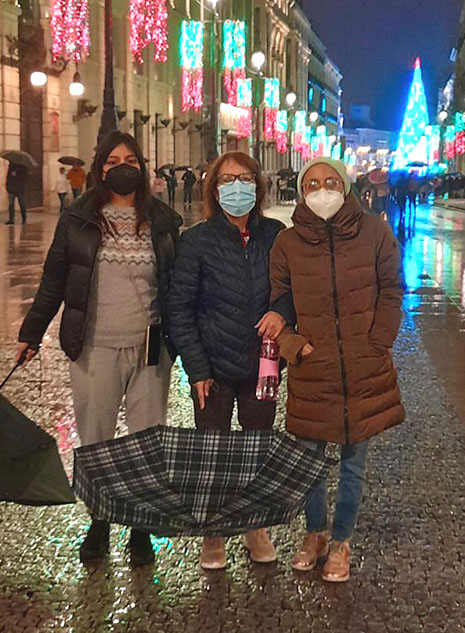

Animals are also my passion, both my cat and my brothers' pets. I really like writing. I also enjoy traveling. Although I can't do it as much as before, I do it every year on my re-birthday.
I can understand my patients more now. It’s a different type of connection. I come to them with more empathy and sincerity. They give me hope, even in palliative care — they give me the desire to keep doing those things they will not have the time to do. I had a patient who loved salsa. I love to dance too, so I dance salsa for me, but also for him. I dance for us both.
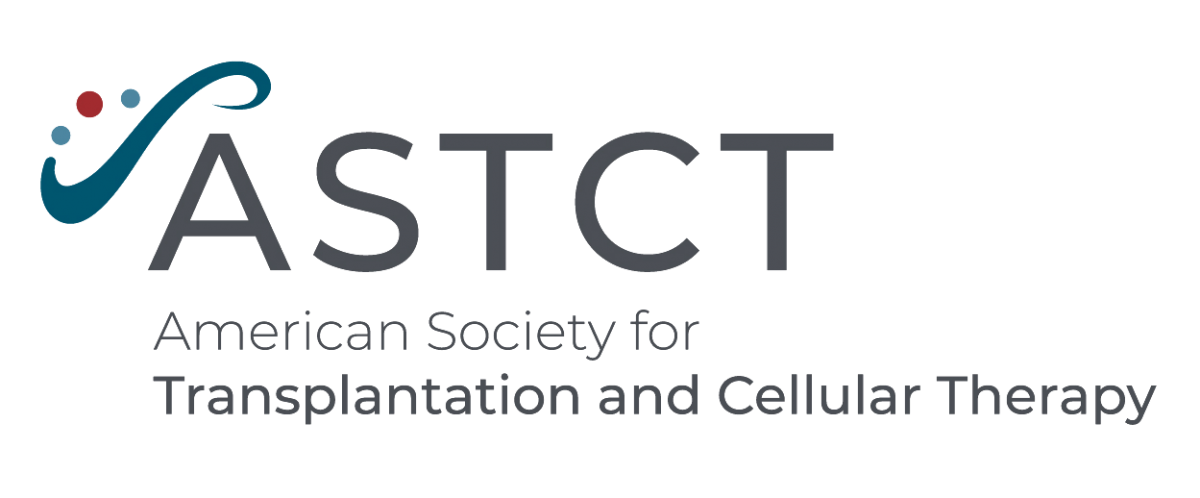
The American Society for Transplantation and Cellular Therapy (ASTCT), formerly known as the American Society for Blood and Marrow Transplantation, is a professional society of more than 2,200 healthcare professionals and scientists from over 45 countries who are dedicated to improving the application and success of blood and marrow transplantation and related cellular therapies. ASTCT strives to be the leading organization promoting research, education, and clinical practice to deliver the best, comprehensive patient care.